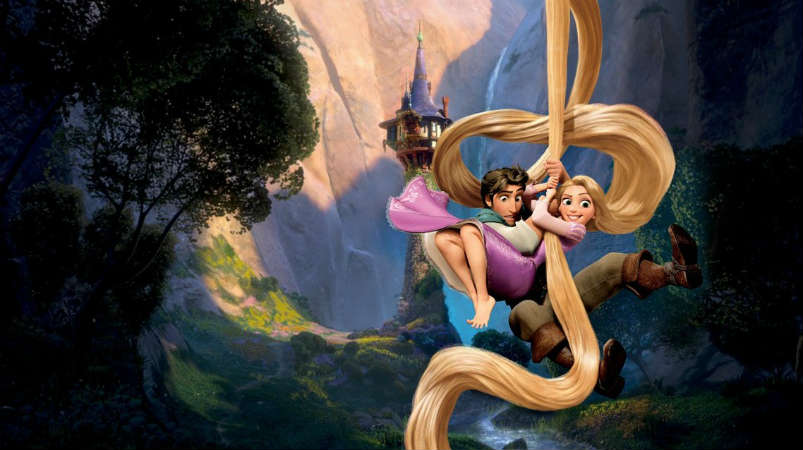
Welcome to Revisiting Disney! This week, we’re looking at the 50th Full-Length Animated Feature Film from Disney: Tangled! Like always, I have labeled each category so if you want to skip to the parts that interest you most, feel free. And, of course, if you have any thoughts, burning or otherwise, please share in the comments!
RELATED Classic Romantic Moment: Tangled – Rapunzel and Eugene
BACKGROUND OF TANGLED

Released on November 24th, 2010, Tangled is a really smart and fun fairy tale. Although Tangled was not nominated for Best Animated Feature Film (this was the year of Toy Story 3 and How to Train Your Dragon), the song “I See the Light” was nominated for Best Music, Original Song in 2011. Tangled was also the first of the princess movies to be rated PG, instead of G. Honestly, I can see it, there’s some dark stuff here.
The title Tangled comes from the fact that the Studio thought that their last animated film, The Princess and the Frog, didn’t appeal to boys because of the princess aspect. The directors, Byron Howard and Nathan Greno, have said that the change in the title was made to emphasize that Flynn and Rapunzel are both important parts of the story, though the more skeptical think that it was just an attempt to market to boys, rather than girls. However, I would like to believe the directors on this.

Photo: Disney
Originally, Tangled was directed by veteran Disney animators Glen Keane (The Rescuers, The Fox and the Hound, The Black Cauldron, Oliver and Company, The Little Mermaid, The Rescuers Down Under, Beauty and the Beast, Aladdin, Pocahontas, Tarzan, Treasure Planet), and Dean Wellins (Treasure Planet, Chicken Little, Bolt, The Princess and the Frog, Big Hero 6), but they had to step down because of other commitments, and were replaced by Howard and Greno. Both were still involved in the animation process, however, and Keane served as the producer and directing animator.
Howard and Greno are both Disney veterans, with screenwriter Dan Fogelman also having worked for Disney in the past. Fogelman had written the screenplay for Bolt with Chris Williams, who had directed it with Howard. Howard, in addition to Bolt, would direct Zootopia, and had worked on the animation for Chicken Little, Brother Bear, Lilo & Stitch, Mulan, and Pocahontas. Nathan Greno worked on the screenplay for Meet the Robinsons, and also worked on the animation for Brother Bear, Chicken Little, Meet the Robinsons and Bolt. He would also work on Frozen.
MUSIC
The music and lyrics for Tangled were written by the duo of Alan Menken and Glenn Slater, the team that brought us the music of Home on the Range. Like with The Princess and the Frog, the actors sang the music of their characters. Mandy Moore played Rapunzel, Zachary Levi is a convincing Flynn Rider, and Donna Murphy is Mother Gothel.
Murphy is able to convey the sinister wiliness of Mother Gothel, Mandy Moore is able to show the hopeful spirit and optimism of Rapunzel, and Zachary Levi conveys the “con man with a heart of gold” personality of Flynn.
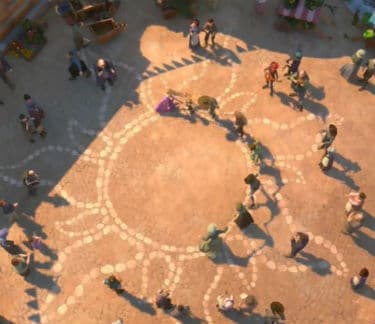
Photo: Disney
With the wonderfully cast voice actors and the well-written music and lyrics, Tangled is another one of those Disney movies with a delightful soundtrack. Not only are the musical numbers wonderful, but the score is solid. It manages to lead the emotions of the audience, being hopeful and haunting at just the right moments.
The dance scene where Flynn and Rapunzel are in the kingdom and waiting for the lanterns, plus the music that is played over it, is one of my favorite pieces in the film. It’s hopeful, energetic, and memorable.
ANIMATION
According to animator Glen Keane, the producer and directing animator, Tangled was thought of as a three-dimensional painting. This was to give the world a lush and romantic feel so that the audience felt they were looking into a painting. In particular, the art was based off, “The Swing,” a painting by French Rococo artist Jean-Honoré Fragonard.

To make sure everyone was on the same page, the painting was duplicated as a 3D shot to get a sense of the dimensions and depth. This was used quite a bit throughout the making of the film just to make sure that the CGI backgrounds did look like a painting, and allowing for the backgrounds to be richer than previous CGI ones had (in my opinion).
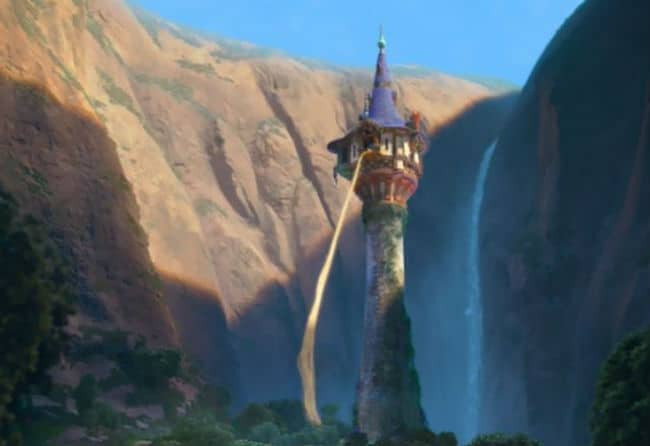
Photo: Disney
From the very beginning, Glen Keane’s vision for the film was one that was shot in 3D but had the look and feel of a traditional film like Pinocchio or The Lion King. He hosted a seminar that he called “The Best of Both Worlds,” and it was attended by animators from both styles. Here, they talked about techniques for both styles and brainstormed ways to blend the two.
Another animator, Kyle Strawitz, was involved in making Tangled have the look it has. According to Keane, Strawitz took the house from Snow White and then built it as a CGI house. Then, he worked on the house until it was a 3D house with the look of a watercolor house. This was a test to see how the two styles could interact, and it seems to have worked out well.
The main goal of Tangled, in some ways, was to use the computer as a tool, just like the pencil was. This allowed the artists to have control over the way the film looked, in the way that Dreamworks and Pixar had begun to do earlier. The film looks great, combining the artistry and heart of the classics with the new technologies.
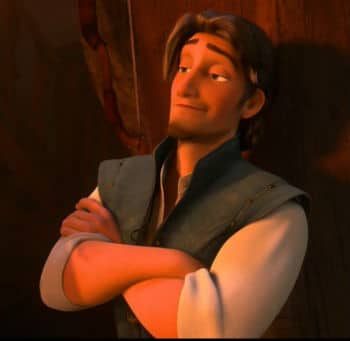
Photo: Disney
My favorite fact about this movie, though, is the fact that the design of Flynn Rider (or Eugene Fitzherbert) was decided on after what the directors called “the hot man meeting,” where they brought in all the female employees to find out what physical features women tended to like (based on their sample). This helped them decide the eye color, hair color and style, and the body type for the character.
PLOT
Tangled starts out with the sun and a magic flower that grew from a drop of it, a flower that could heal the sick. One old woman discovered its power and hides it, using it to keep herself young forever. Years later, the queen of the nearby kingdom is sick and her people were determined to save her. Finding the flower, they used it to save the queen, and when she and the king had a baby, she had beautiful golden hair.
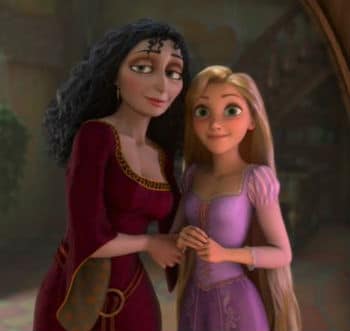
Photo: Disney
It turns out that the baby’s hair had the same magical healing abilities as the flower did, and the old woman, determined to live forever, kidnapped the baby Rapunzel and raised her as her own in a hidden tower. The king and queen, still searching for their daughter, filled the sky with lanterns every year on her birthday to guide their daughter home.
Rapunzel grows up in the hidden tower raised by the old woman, Mother Gothel, who warns her that the outside world is a dark and cruel place. She isn’t allowed to leave the tower, but desperately wants to see the floating lights she sees every year on her birthday. When thief Flynn Rider, after stealing the crown of the Lost Princess from the castle, seeks refuge in what he thinks is an abandoned tower, their lives will never be the same.
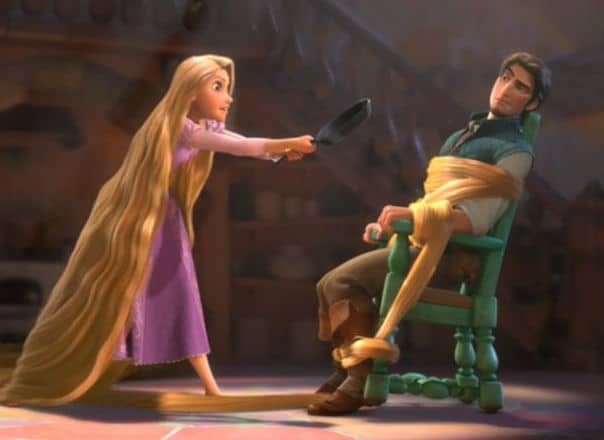
Photo: Disney
Rapunzel convinces Flynn to take her to see the lights, and the thief and the princess set out, learning about themselves and each other. As they travel, they are being chased by the palace guard, out to arrest Flynn, the Stabbington Brothers, out for revenge on Flynn, and Mother Gothel, determined to keep Rapunzel’s power for herself. Will Rapunzel ever see the lights? Can the lost princess be saved? Can the princess and the smuggler (I mean thief, sorry), make it work?
SOURCE MATERIAL
Tangled is loosely based on the fairy tale “Rapunzel” by Jacob and Wilhelm Grimm, who based it on a combination of German and French fairy tales. In the fairytale, Rapunzel’s mother craved the lettuce that she saw in the neighbor witch’s garden. In some versions, the witch cursed her to crave the lettuce.
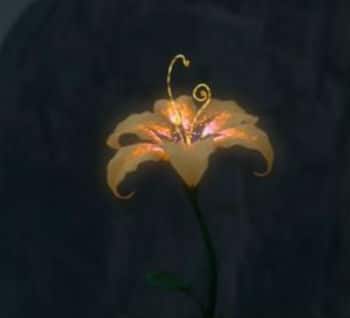
Photo: Disney
When she started to die because of the craving, her husband snuck in at night to steal some (to save his wife). The witch catches him and is very unhappy. When he explains the situation, she is less angry and says she’ll spare him, as long as they give her their baby. She promises to treat it well, which is some consolation? He agrees, and Rapunzel is raised by the witch. When she turns twelve, she’s locked in the tower.
When the witch wants to visit her daughter, she calls up the familiar line, and Rapunzel hauls her up. Our heroine spends her days singing, and one day, years later, a prince hears her. He falls in love with her, like you do, and so he figures out the rhyme, meets Rapunzel, and she falls in love with him too. Standard fairytale stuff.
They make plans to escape; he brings her rope to make a ladder (instead of just bringing a ladder?) and in some versions, they get married, somehow. One day, Rapunzel either asks why the witch is such a slower climber than the prince, or makes a comment about her clothes not fitting anymore (because she’s going to have a baby). Either way, the witch is furious, cuts off Rapunzel’s hair, and banishes her to the desert.

Photo: Disney
The Witch then uses the hair to lure the prince up the tower, where she blinds him. Then, she makes him wander the desert, searching for poor Rapunzel. One day, he hears Rapunzel singing and wanders toward her. When she sees him, she hugs him and cries on his eyes. Her tears are magic, and he can see again. He takes her back to his castle, and they live happily ever after (sometimes with the twins Rapunzel had while in the desert).
See what I mean? It seems like the Grimm Brothers couldn’t just write a happy ending; there had to be a lot of blindness and tragedy and childbirth alone in the desert before that happiness. So, overall, the changes in Tangled don’t bug me; I like the adaptation we got here.
The 2000’s
2010 continues the trend of a financial crisis with a side of unemployment, while the US and the countries in Europe start trying new ways to address the issue. The Winter Olympics are in Vancouver, and the Healthcare Reform Bill/Patient Protection and Affordable Care Act is passed in Congress.
This is also the year of the BP Deepwater Horizon Oil Spill Disaster in the Gulf of Mexico, while the United States increased the number of troops in Afghanistan, to deal with the Taliban and Al-Qaeda groups in that country. Iran continues to build Nuclear Power Plants, there were floods, monsoons, earthquakes, and other natural disasters around the world, and there was an explosion in a mine in West Virginia that killed thirty-one miners.
I think that Tangled is a good movie for this time period because even though there are negative things happening, still, there is a feeling of hope here. The balance between that feeling of sadness and the feeling that the world is not just a dark and hopeless place is one that I remember appreciating when I saw Tangled in theaters.
Because yes, I, a fully grown adult woman, saved up to go see Tangled in theaters with a friend (though I remember feeling cheated that the strong independent Disney princess ended up being a brunette, not a blond).
LESSONS LEARNED
The first moral of Tangled, I think, is that when you have a dream, you need to pursue it. When you find your dream, you get to chase another one. That’s the beauty of dreams.
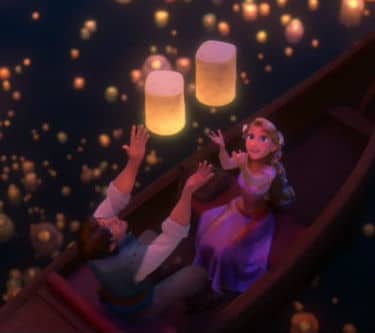
Photo: Disney
There is also the lesson that the world isn’t a scary and dark place; there is hope and light and love.
Finally, love is the most powerful force in the universe. Flynn is willing to die for Rapunzel; she is willing to be a prisoner forever to save him. The outlaws basically adopt Rapunzel as their little sister and are willing to risk prison to save her by busting Flynn out of prison.
DOES IT HOLD UP?
I might have said this last week, but I love this movie too. The animation style, the music, the story, the characters…there is just so much to love in Tangled. It was a great way for the Disney Studio to blend the artistry of their past with the technology of the future, and the film that made me think Disney could do CGI and I could actually like it.
For next week: Wreck-It Ralph
If you enjoyed this post and the others in the Revisiting Disney series, and have found yourself wishing that you could find them all in one convenient and bound book with eight extra essays, there is an option for you! Check out A Journey Through Disney: My Look Back Through Disney Canon, now available on Amazon as both a Kindle book ($4.99) and a paperback ($11.99).
OTHER SOURCES:
https://thewaltdisneycompany.com/about-disney/disney-history
http://www.imdb.com
http://studioservices.go.com/disneystudios/history.html
http://www.thepeoplehistory.com
Bailey, Adrian. Walt Disney’s World of Fantasy. Everest House Publishers. New York, New York. 1982.
Finch, Christopher. The Art of Walt Disney: From Mickey Mouse to the Magic Kingdom. Harry N. Abrams, Inc. New York, New York. 1975.
Johnston, Ollie and Frank Thomas. The Disney Villain. Hyperion. New York, New York. 1993.
Thomas, Bob. Disney’s Art of Animation From Mickey Mouse to Hercules. Hyperion. New York, New York. 1992.
ARE YOU A ROMANCE FAN? FOLLOW THE SILVER PETTICOAT REVIEW:
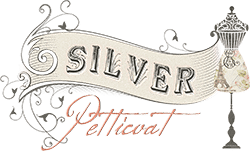 Our romance-themed entertainment site is on a mission to help you find the best period dramas, romance movies, TV shows, and books. Other topics include Jane Austen, Classic Hollywood, TV Couples, Fairy Tales, Romantic Living, Romanticism, and more. We’re damsels not in distress fighting for the all-new optimistic Romantic Revolution. Join us and subscribe. For more information, see our About, Old-Fashioned Romance 101, Modern Romanticism 101, and Romantic Living 101.
Our romance-themed entertainment site is on a mission to help you find the best period dramas, romance movies, TV shows, and books. Other topics include Jane Austen, Classic Hollywood, TV Couples, Fairy Tales, Romantic Living, Romanticism, and more. We’re damsels not in distress fighting for the all-new optimistic Romantic Revolution. Join us and subscribe. For more information, see our About, Old-Fashioned Romance 101, Modern Romanticism 101, and Romantic Living 101.
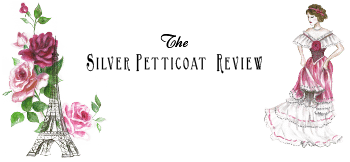
One of my “forever” Disney favorites despite it not being considering a “classic.” I love it, and am totally cool with that. 🙂
It’s a really good one, and I think it will be considered one of the modern classics. I love it too 🙂
Doesn’t Fragonard’s The Swing then go on to appear briefly in Frozen? Possibly an in-joke?
It does! And I’m sure it is (and if not, it should be); during “For the First Time in Forever,” it’s hanging up in the palace. Rapunzel and Eugene are there during that number too.